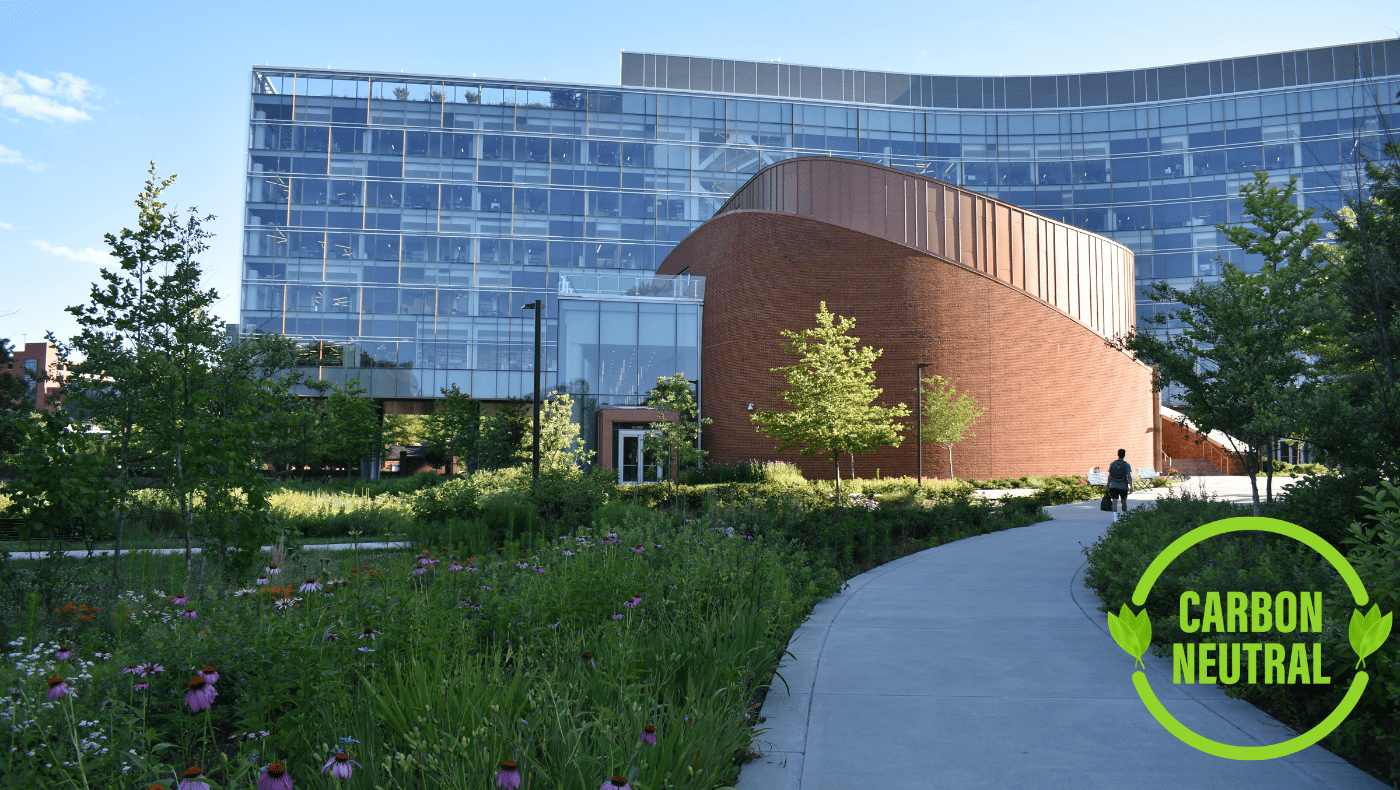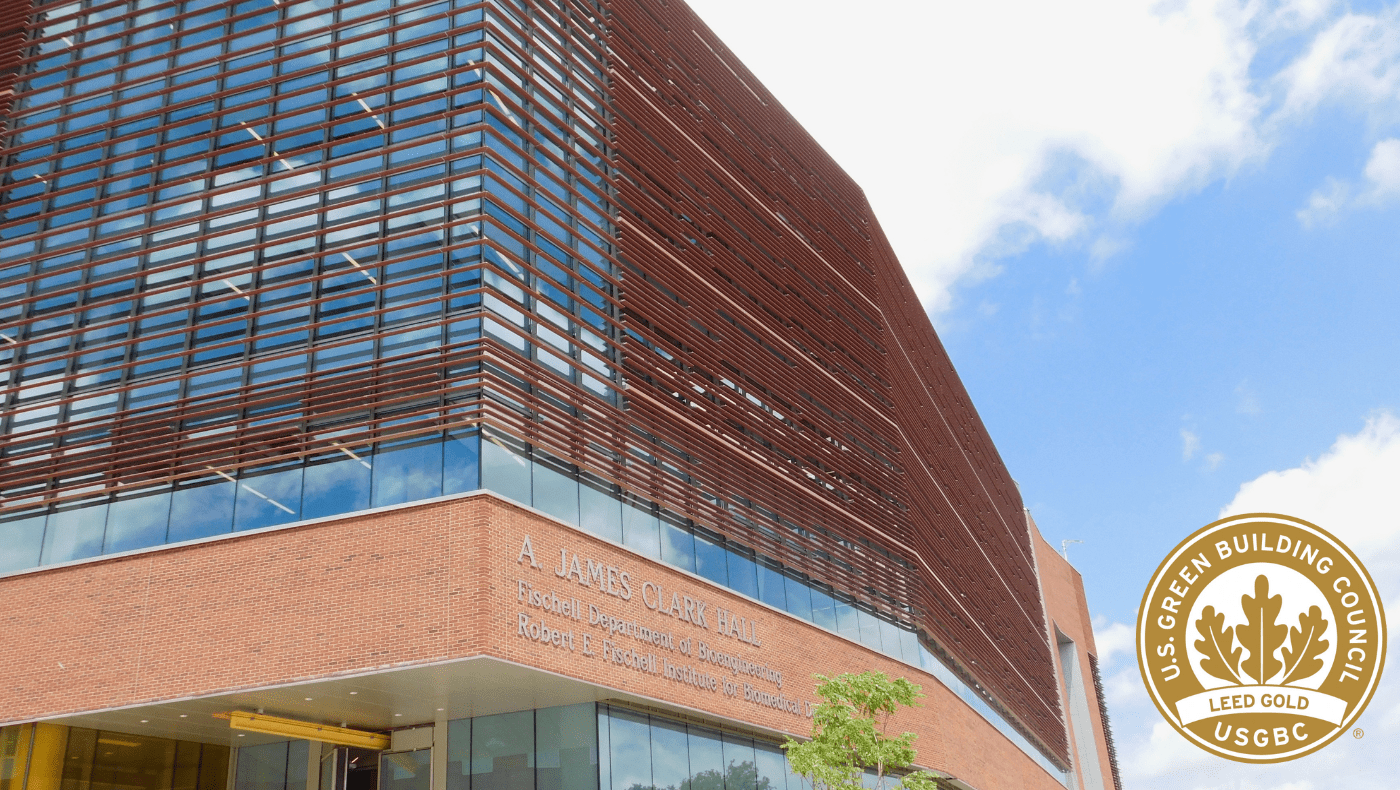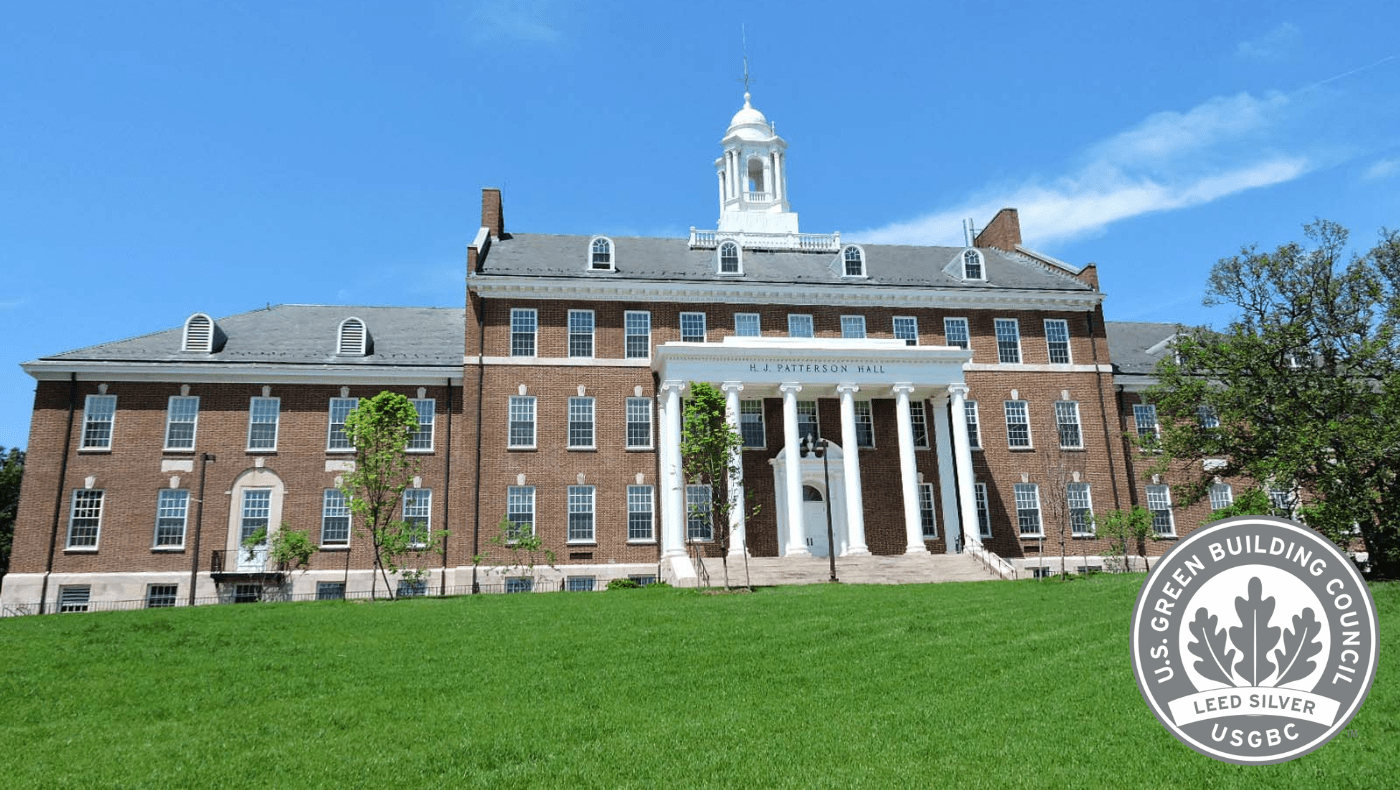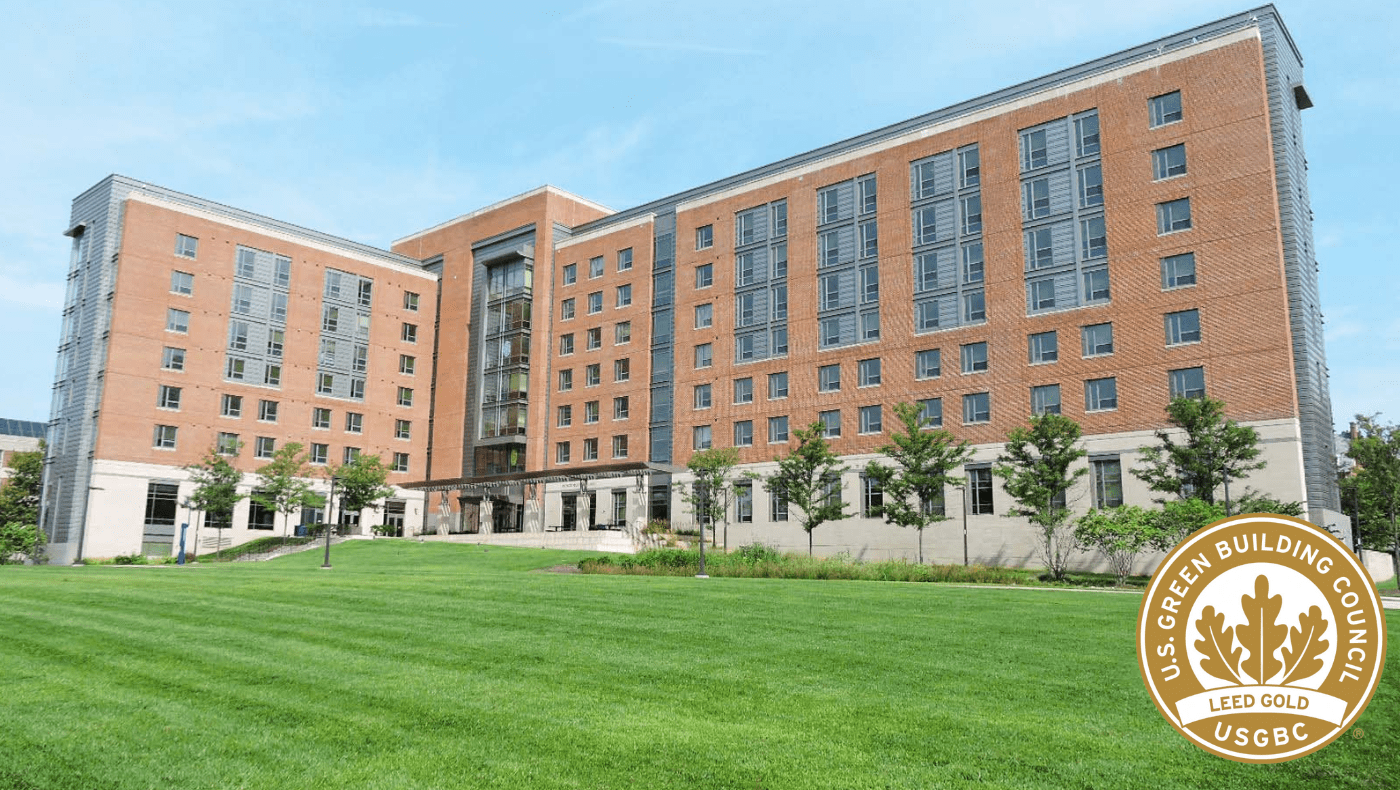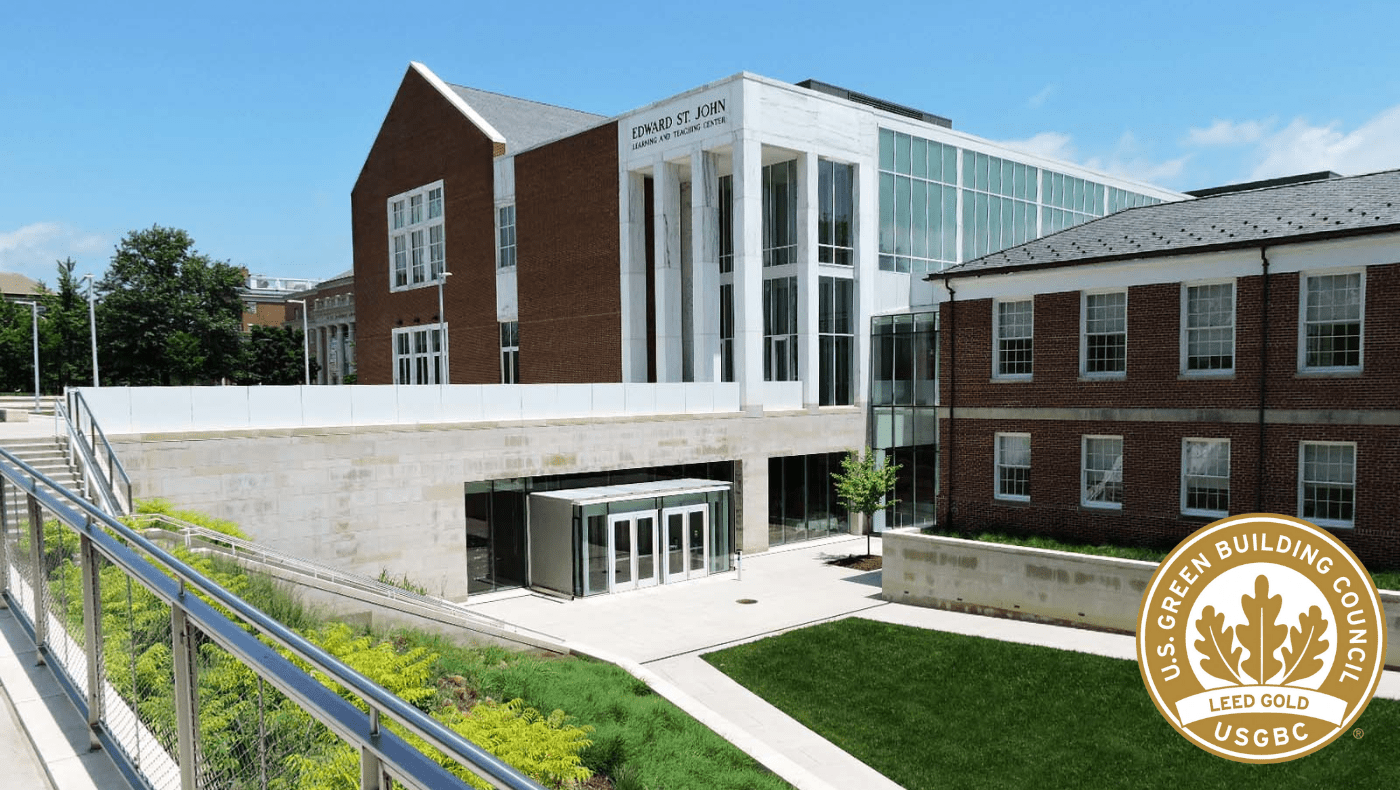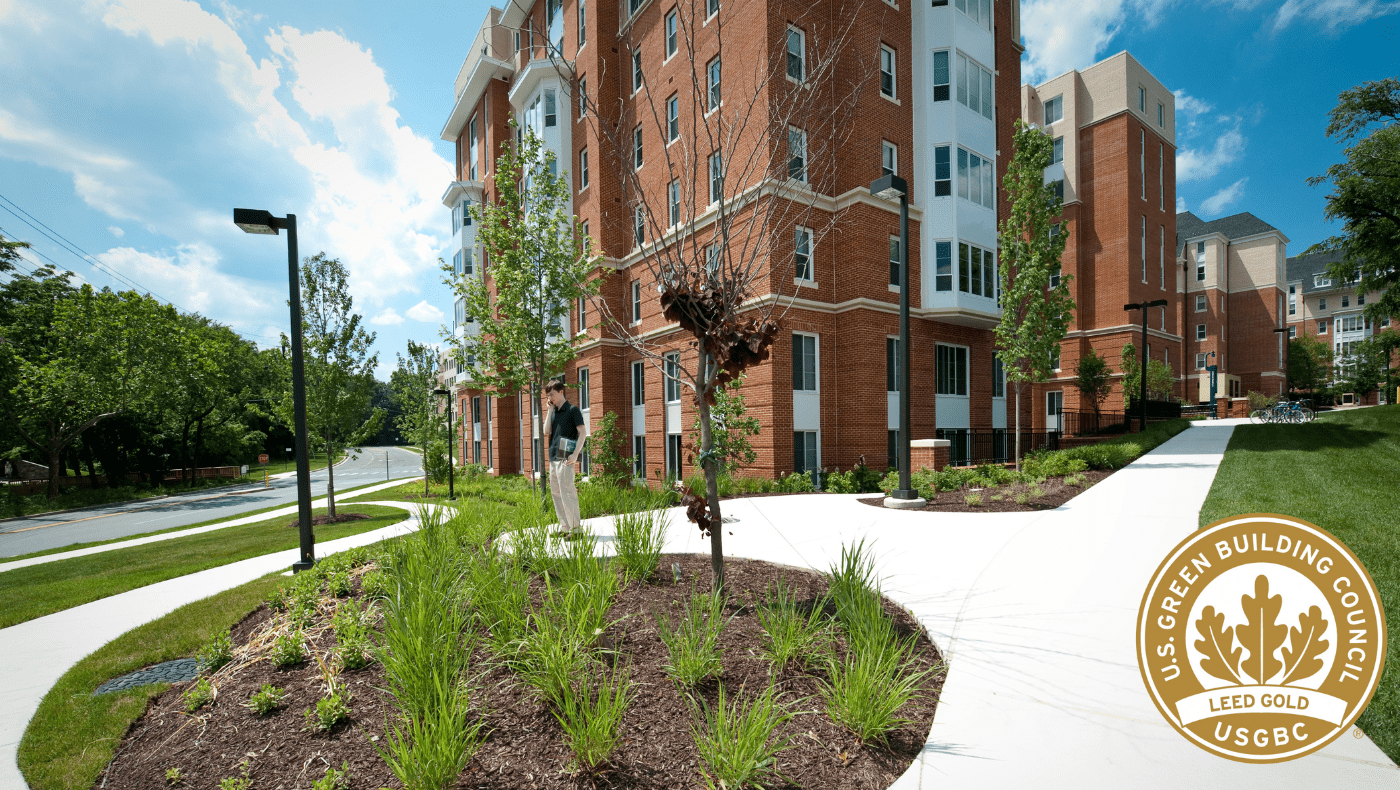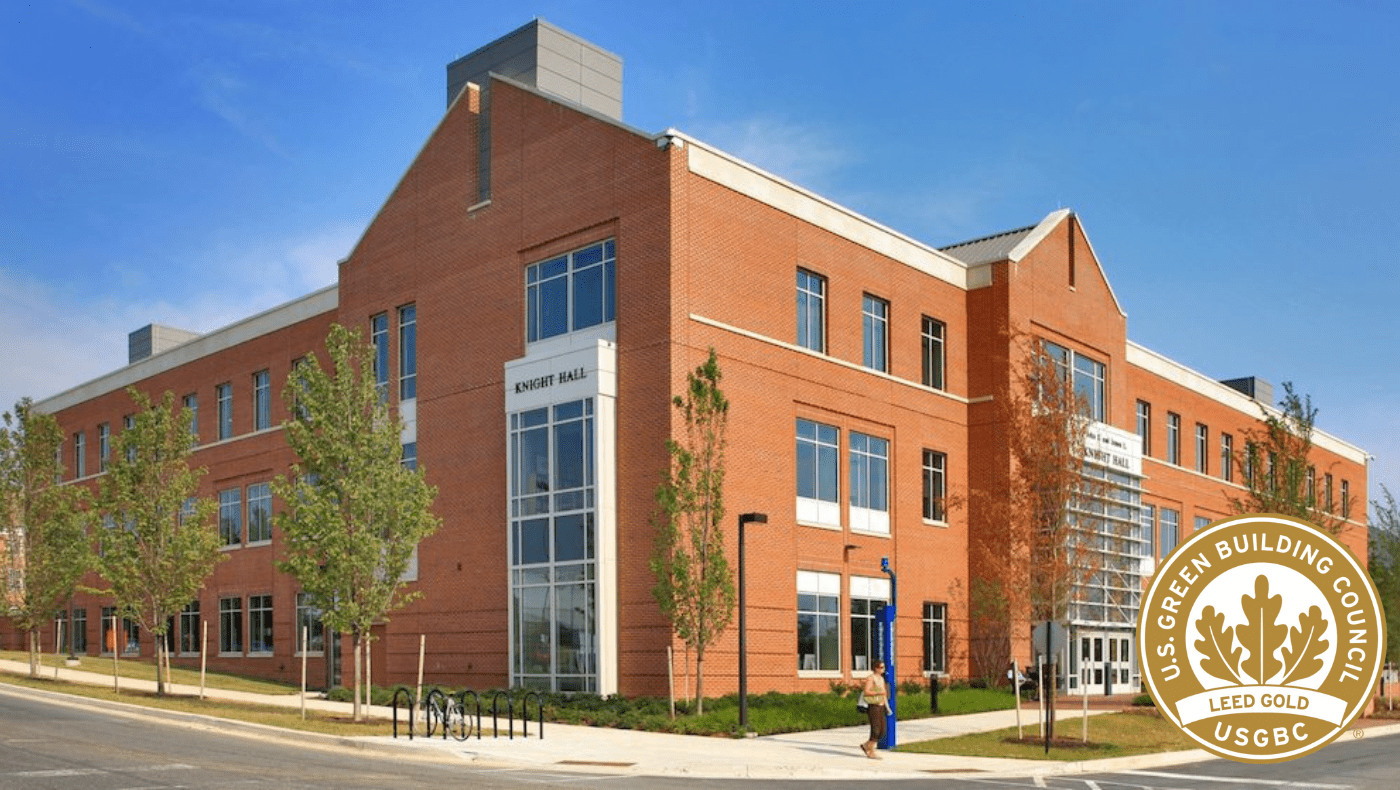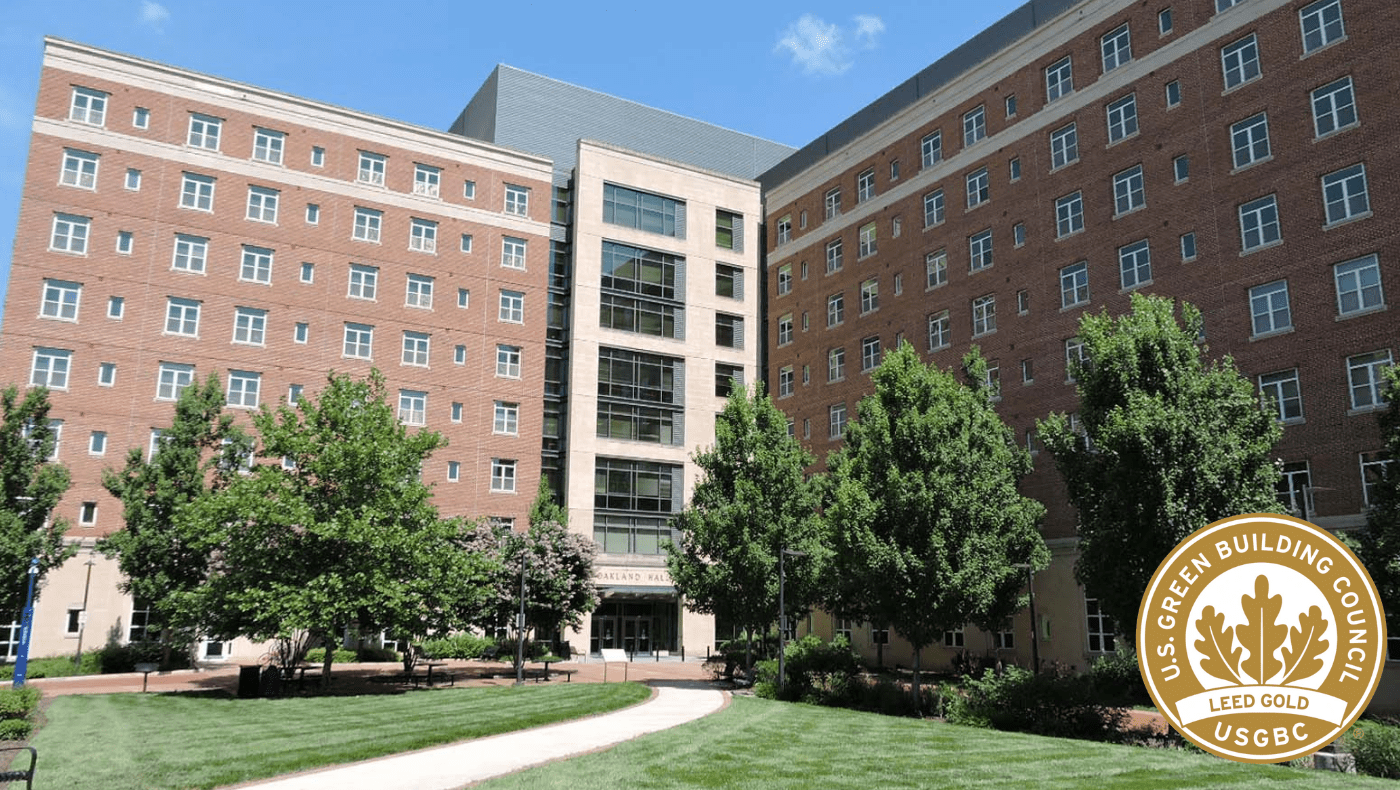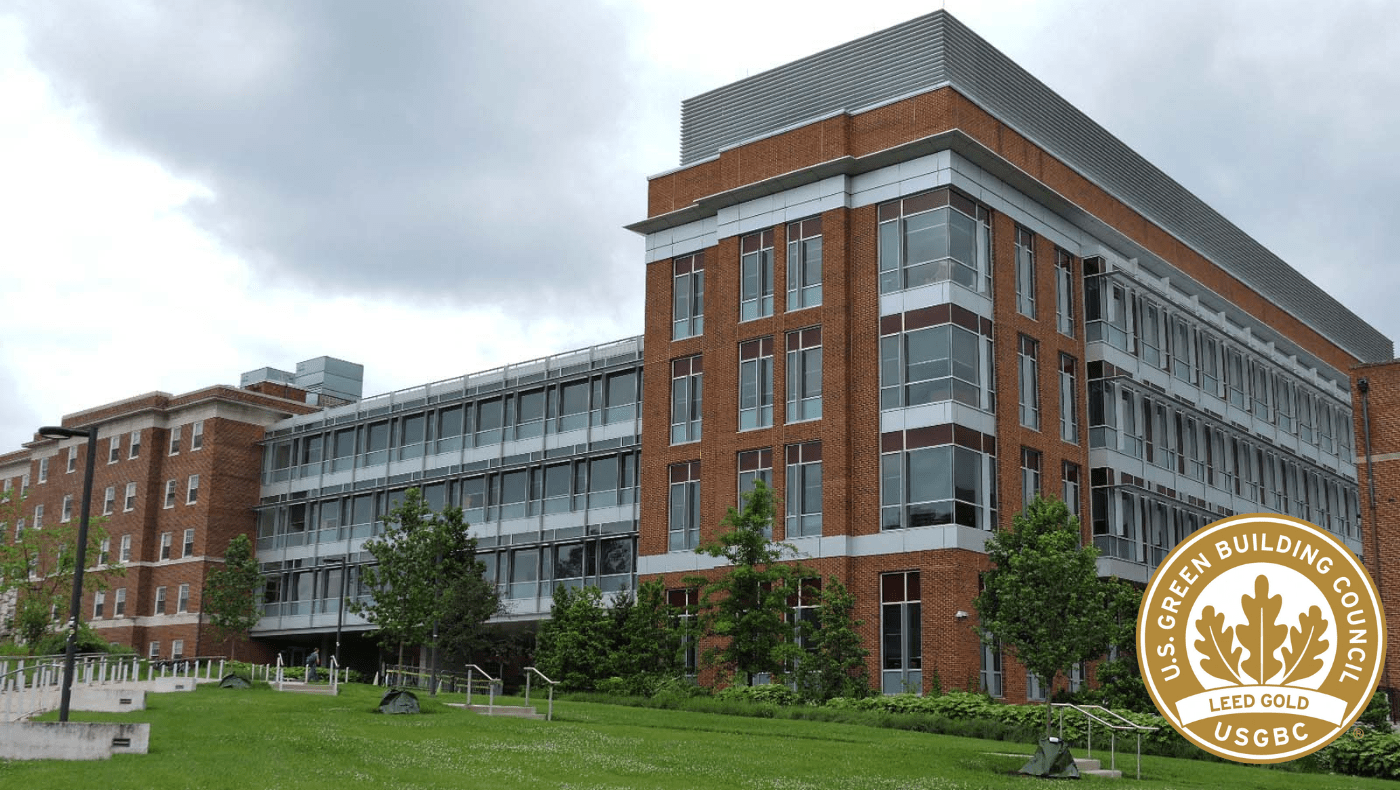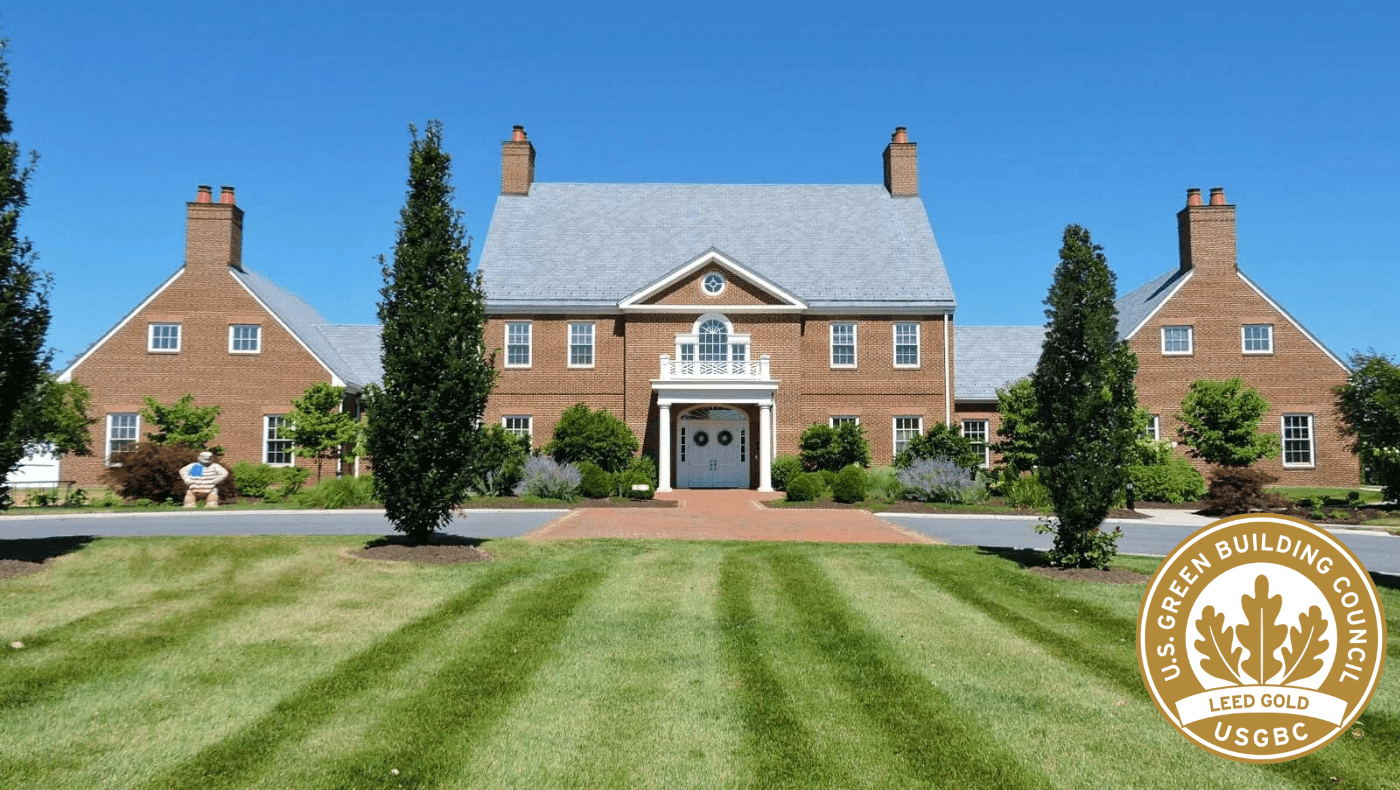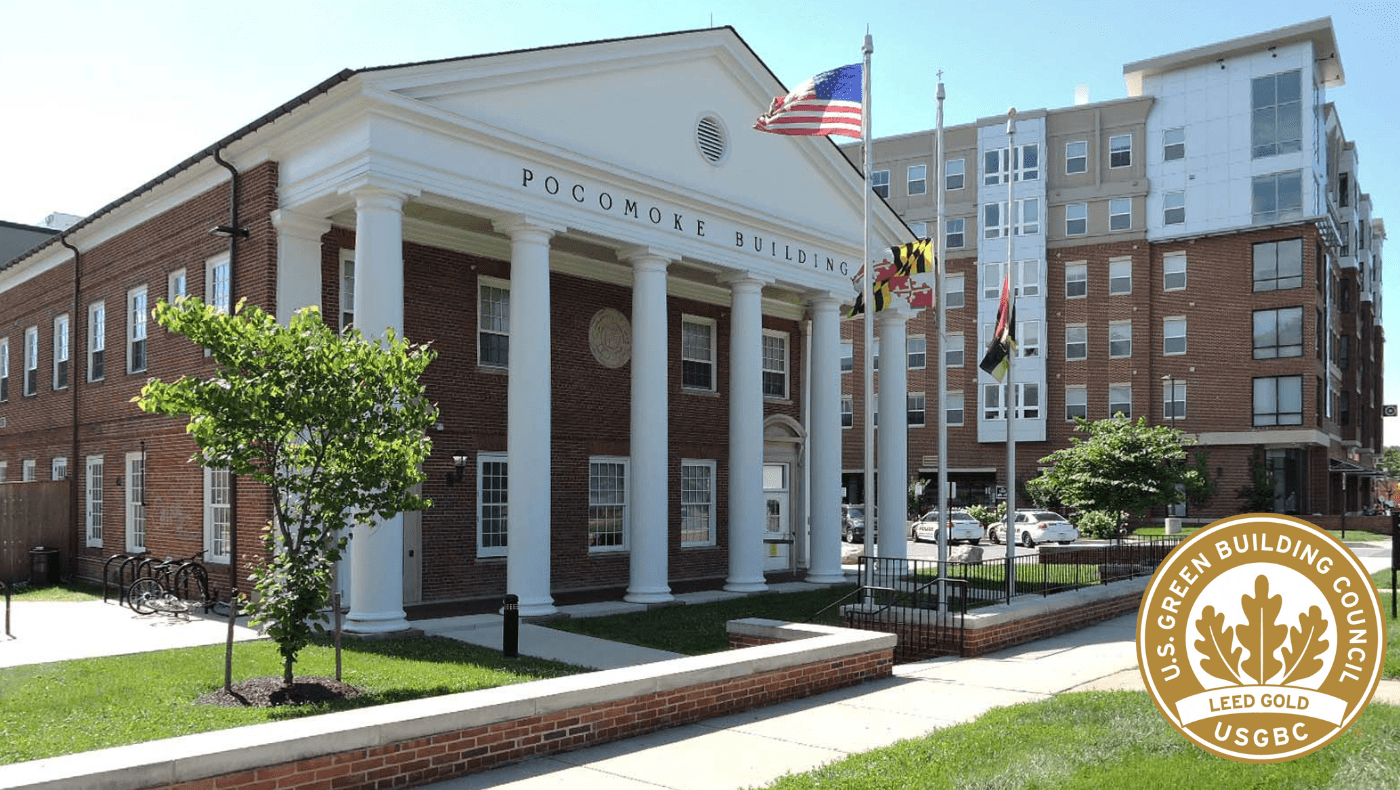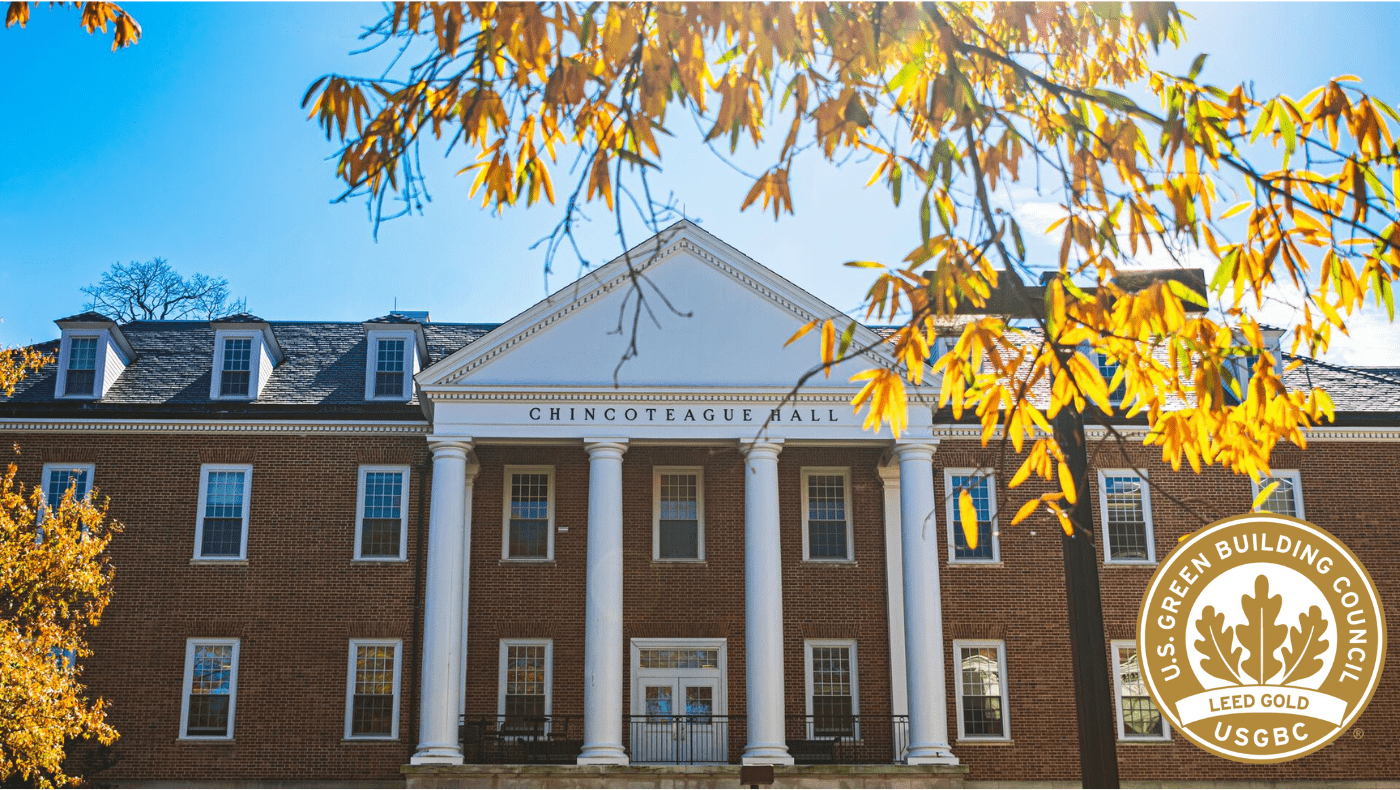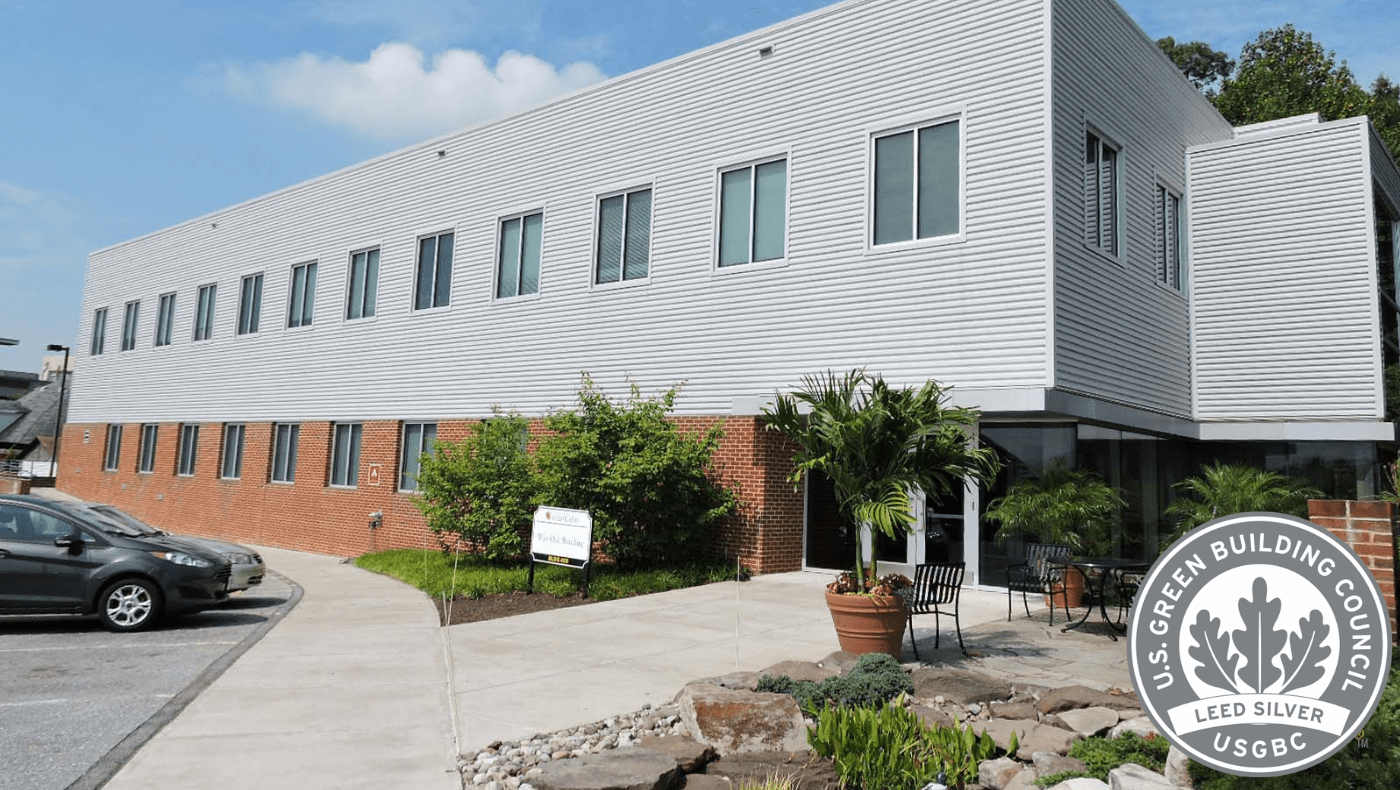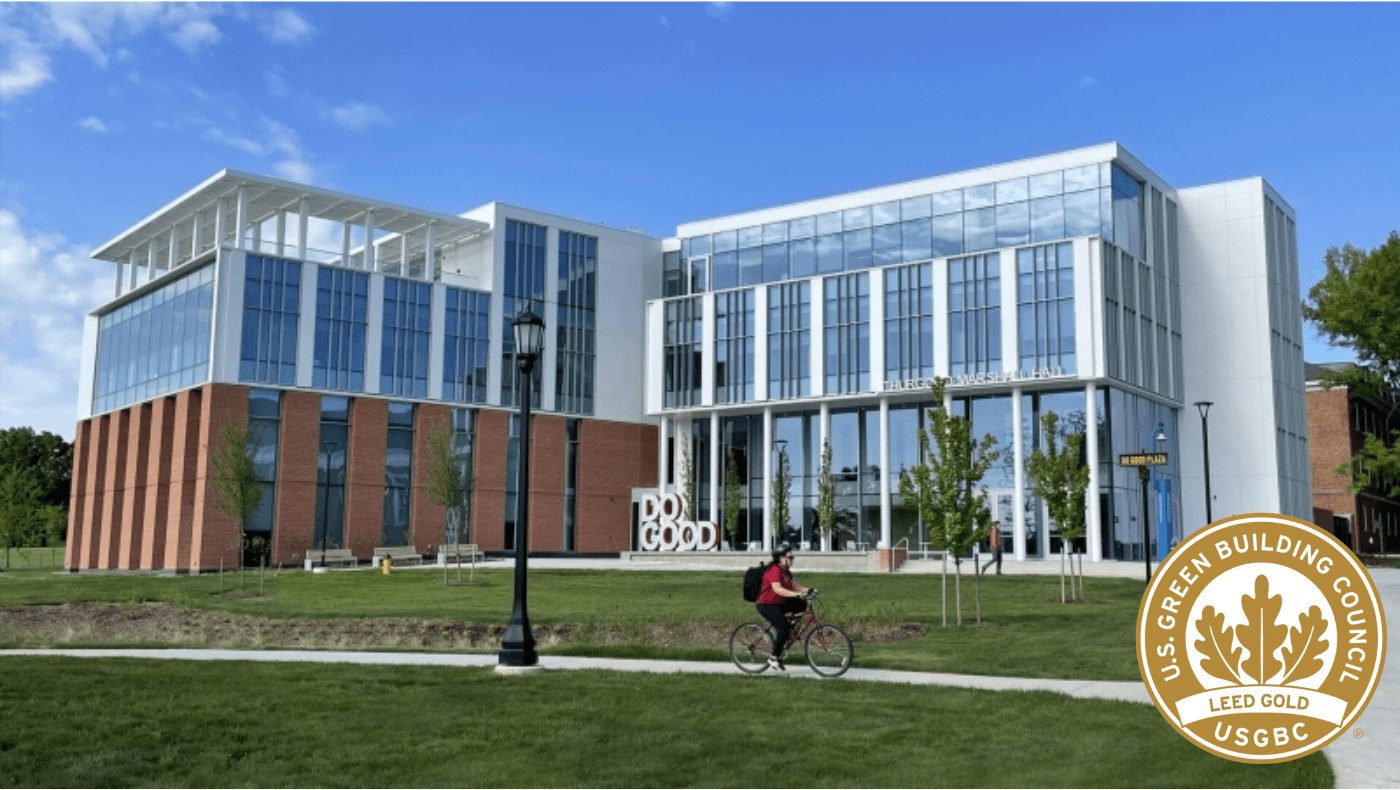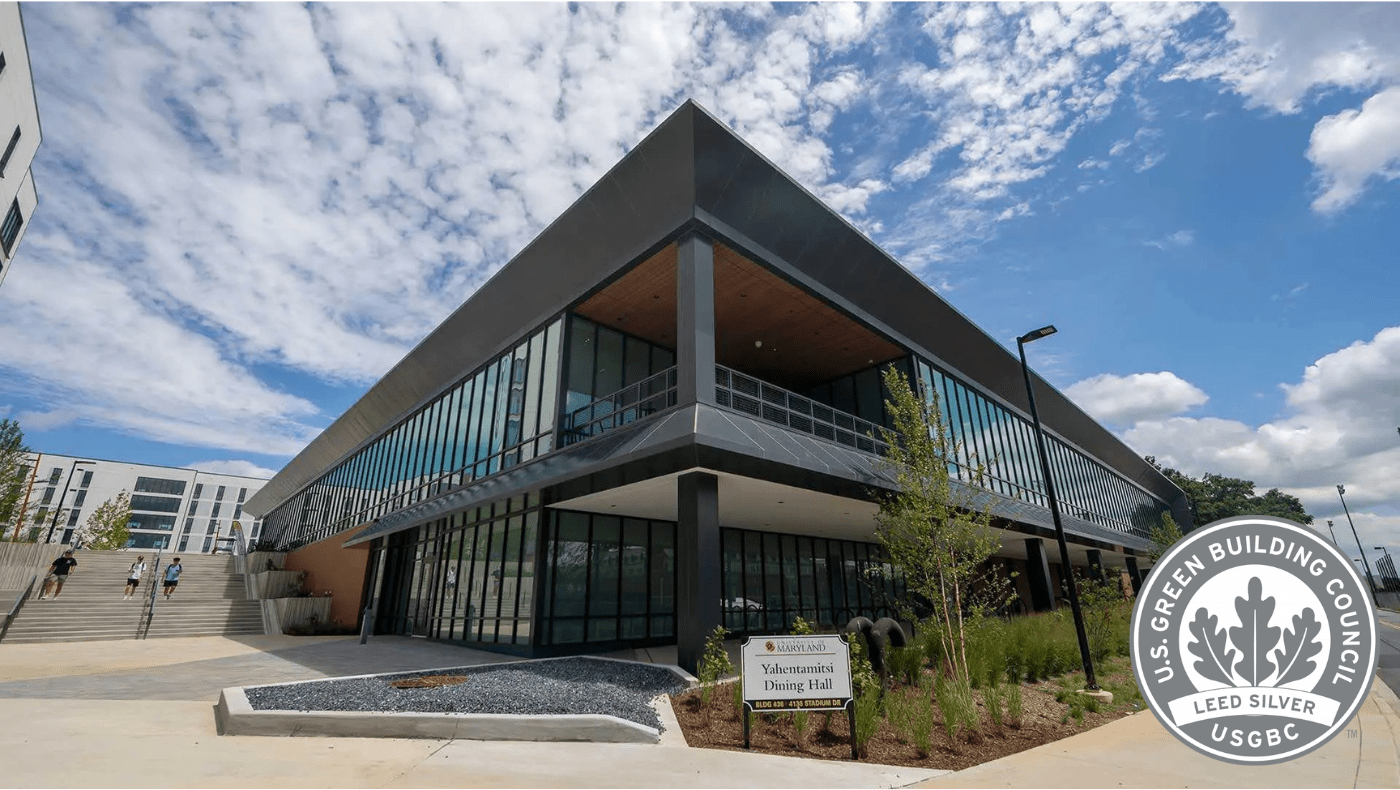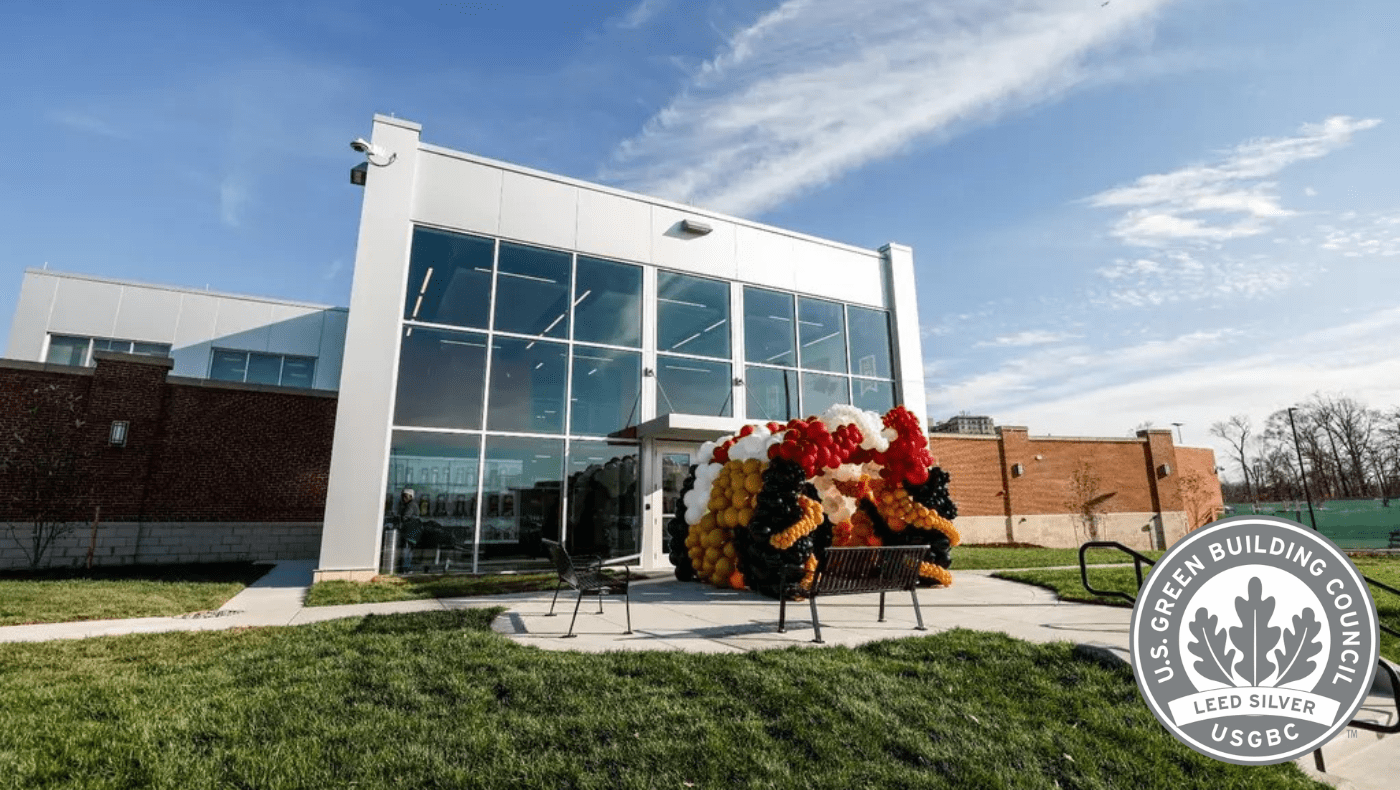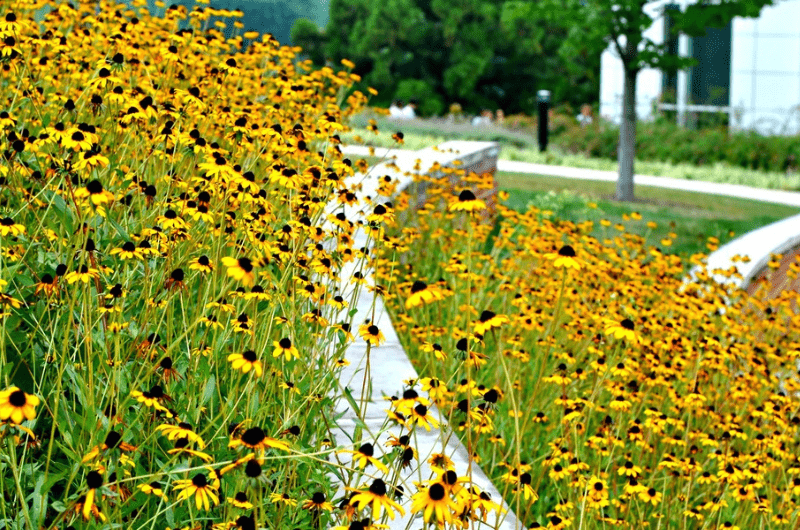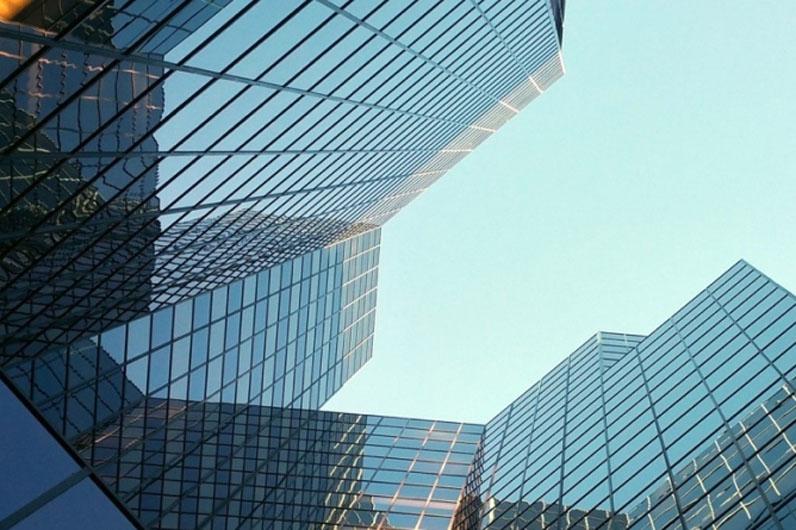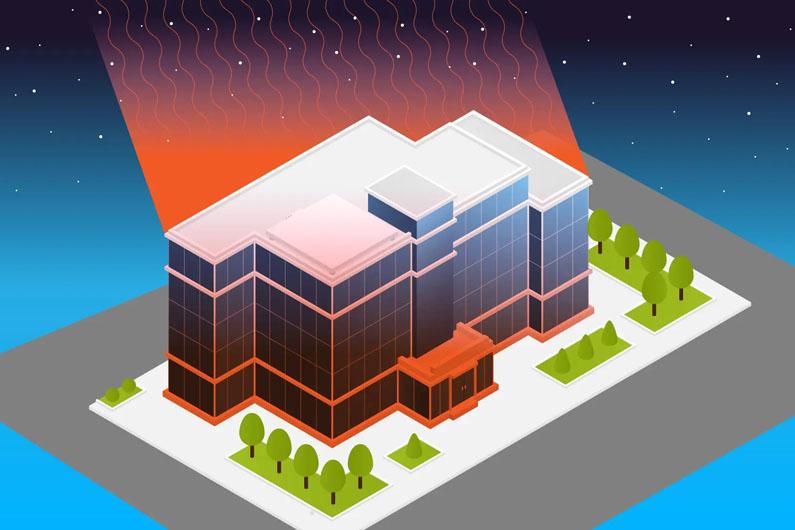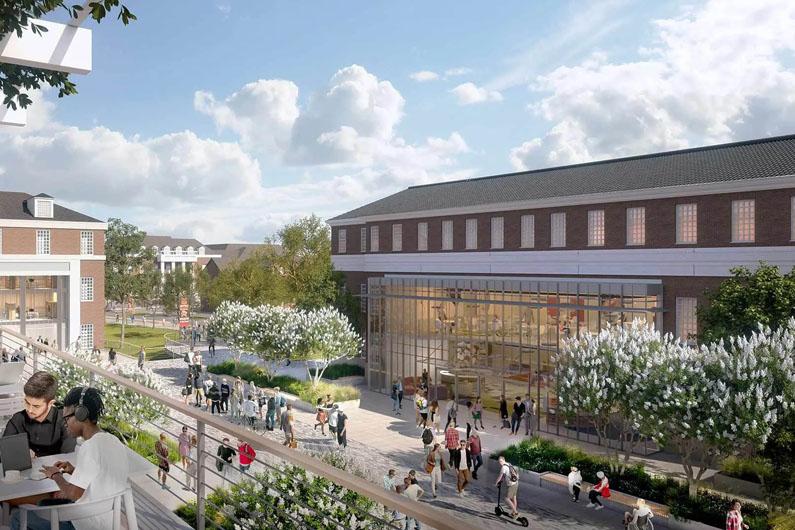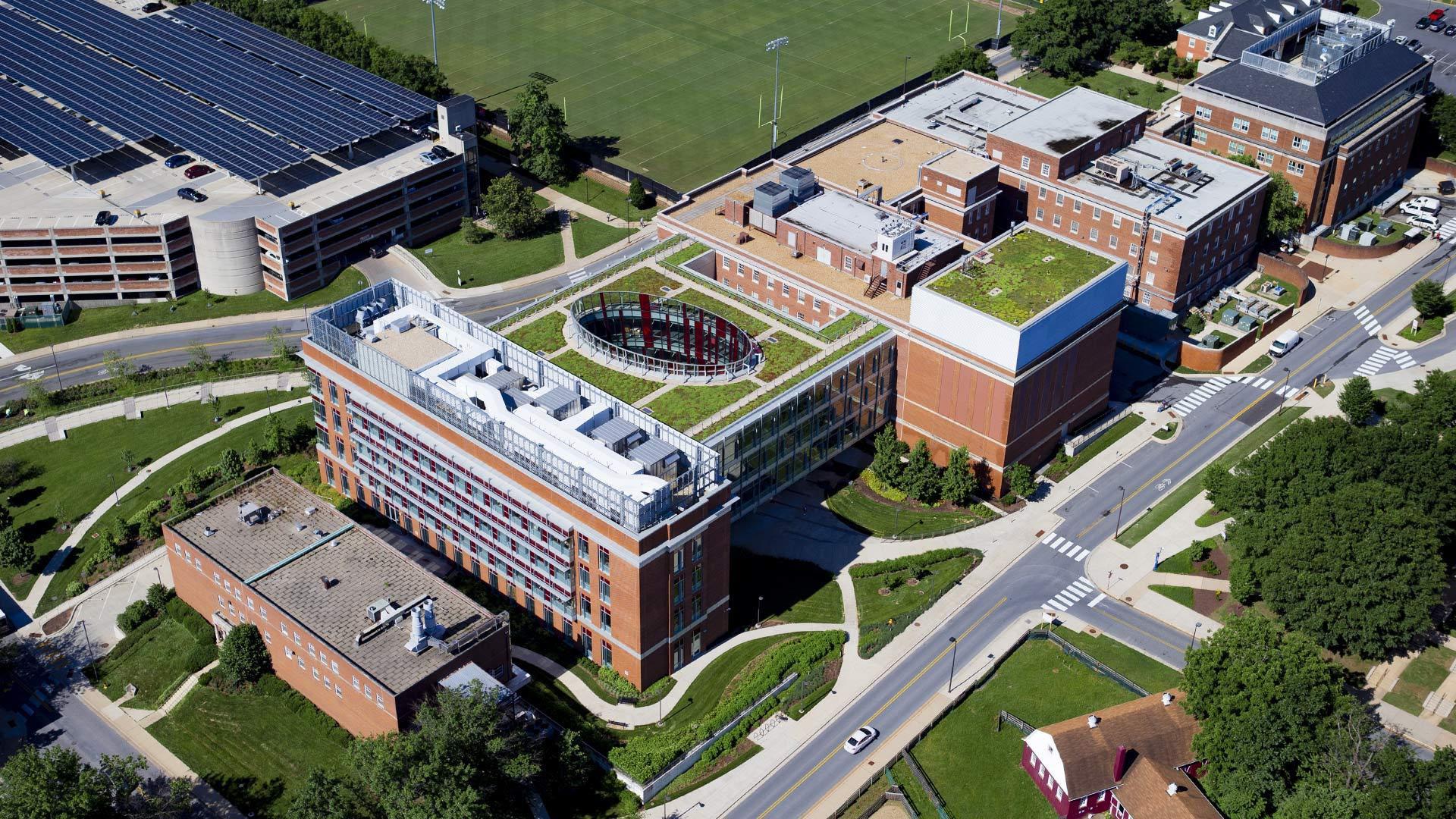
Sustainable Buildings
Both the university and the State of Maryland are making significant strides in green building construction and renovation.
Through updates to existing infrastructure and newly built green buildings, the campus conserves energy, reduces the use of raw materials, and saves costs. Our campus community can be inspired and protected from indoor environmental issues when they live, work, and learn in efficient and sustainable buildings.
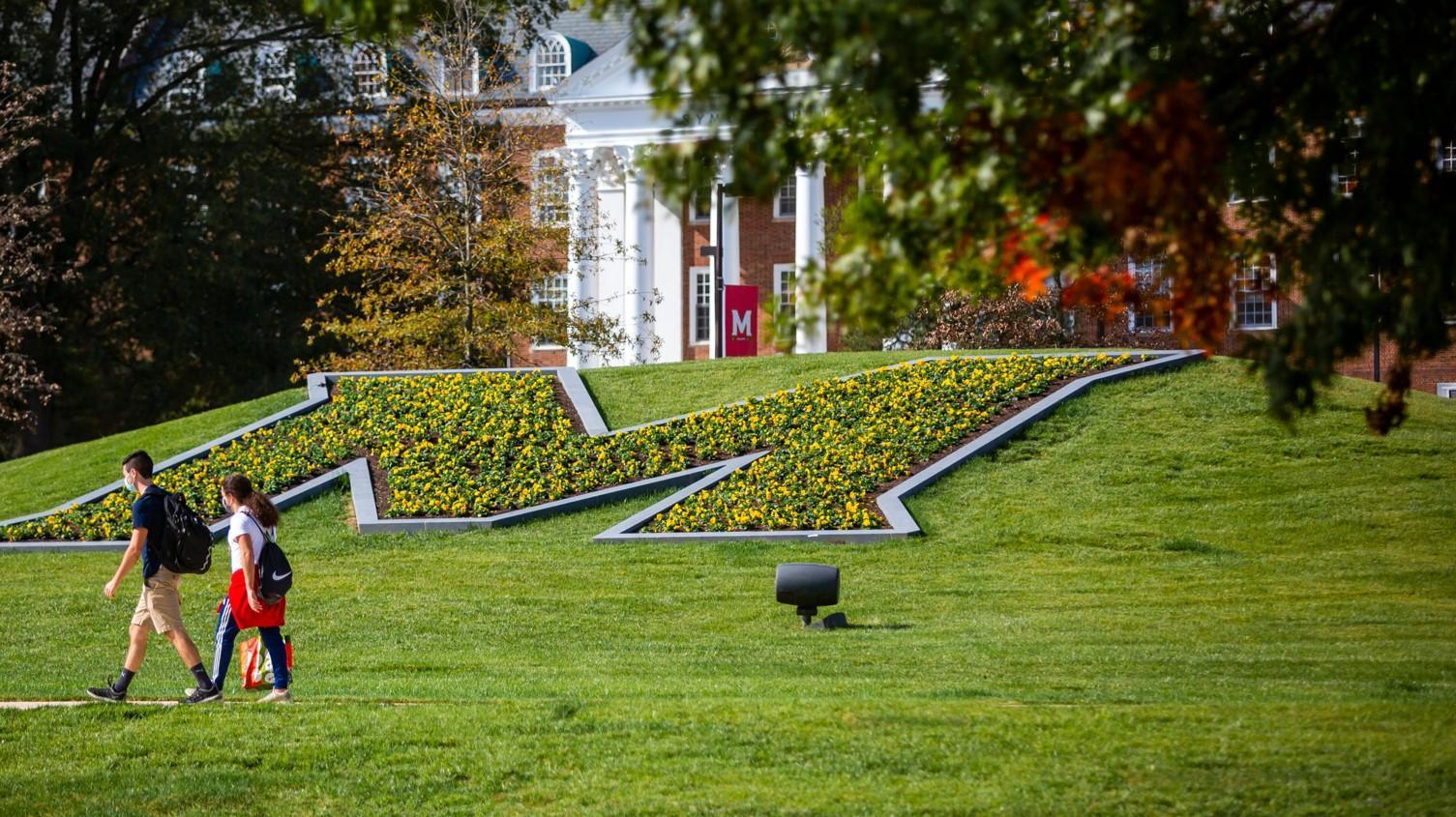
Campus Commitments
Supporting sustainable buildings, infrastructure, and community on campus
- Carbon Neutral New Development: Since the President's Energy Initiatives were announced in 2014, all new development at UMD is carbon neutral. New buildings, major renovations, and space use changes at UMD all must incorporate strong energy conservation measures and offset any carbon emissions. The Brendan Iribe Center for Computer Science and Engineering is the first major new construction project that is fully carbon neutral throughout its operational lifetime.
- Building a Sustainable Future: Locally, UMD and partners in government and business are guiding urban planning with a deep commitment to “smart growth” practices that help our broader community design more sustainable buildings, streets, and neighborhoods. “Smart growth” covers a range of development and conservation strategies that help protect our health and natural environment and make our communities more attractive, economically stronger, and more socially diverse” (US EPA).
- High Performance Buildings: The University of Maryland has set a goal that all new construction and major renovations will be high-performance buildings. To comply with Maryland's High Performance Green Building Program, UMD building projects must achieve 15% better energy efficiency than the current energy code.
Green Building Standards
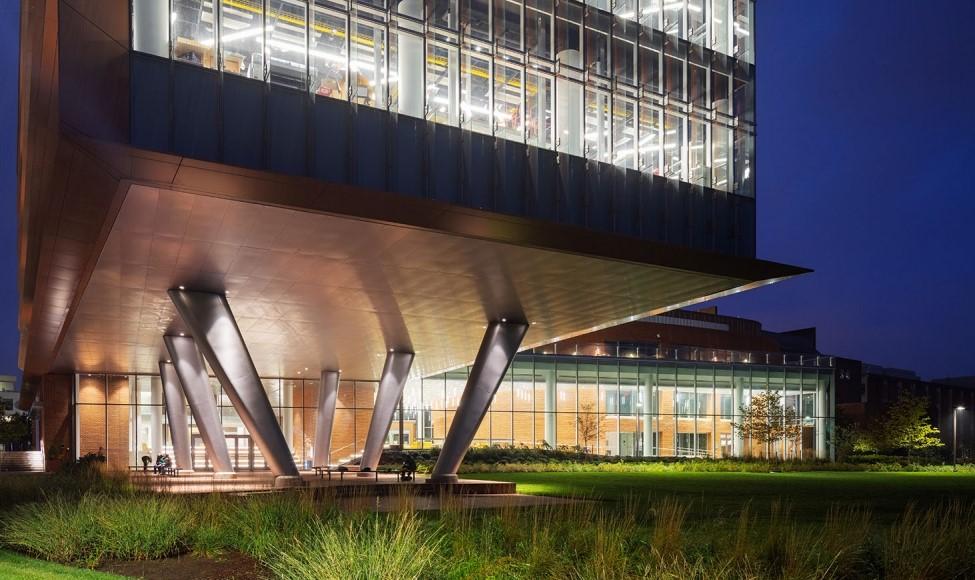
Design Criteria/Facilities Standards (DCFS)
Sustainability is an important part of university standards and design guidelines for new construction and building renovations- setting requirements on operations and maintenance, energy efficiency, and materials. To ensure the University’s building and infrastructure are designed in compliance with the University’s green building commitment and the High Performance Buildings Act, the standards address environmental stewardship and LEED design criteria. UMD Facilities Management (FM) plays a defining role in the design and construction of campus buildings. Site sustainability, energy, water conservation, indoor environmental quality, and materials are the key areas that FM evaluates for new construction to ensure environmental sustainability.
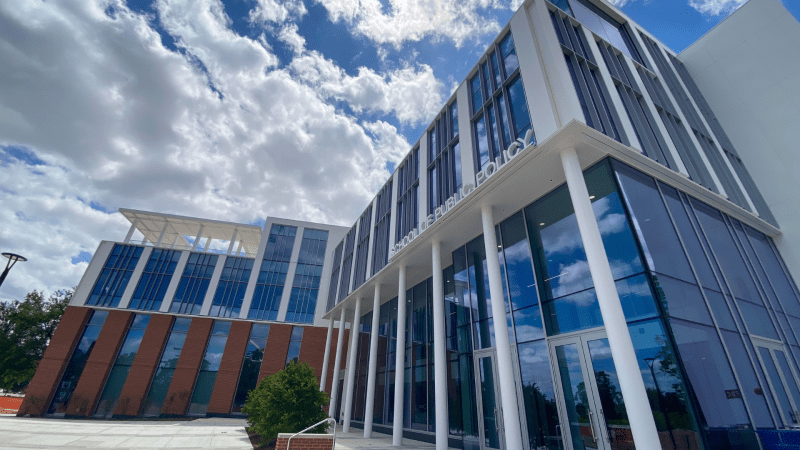
Maryland's High-Performance Green Building Program (HPGBP)
The Maryland Green Building Council established the HPGBP, to guide Maryland state agencies and local educational agencies in the programing, design, and construction of facilities. A High Performance Building is one which achieves either a Silver rating or better under the U.S. Green Building Council’s Leadership in Energy and Environmental Design (LEED) rating system, a two Green Globes rating or better under the Green Building Initiative’s Green Globes rating system, or which complies with the Maryland Green Building Council’s supplement to the International Green Construction Code (IgCC) enacted in November 2014.
Campus Green Buildings
Click through the slideshow below to learn more about sustainability features of green buildings on campus. Explore the campus map to see renewables energy generation locations, green roofs, and LEED certified buildings at UMD.
